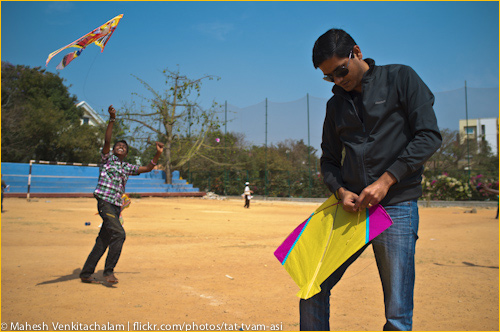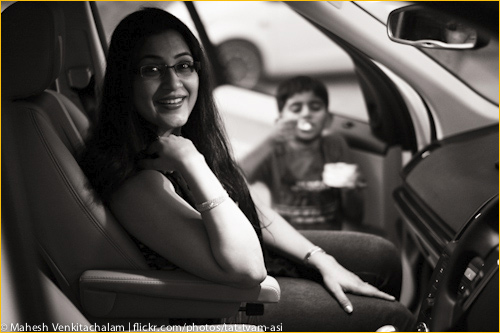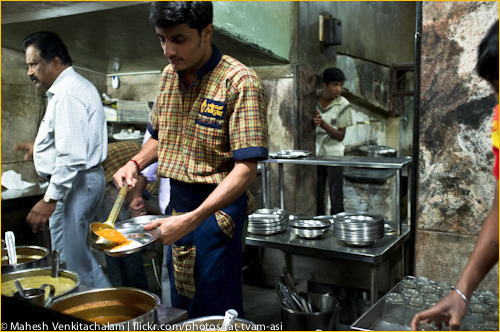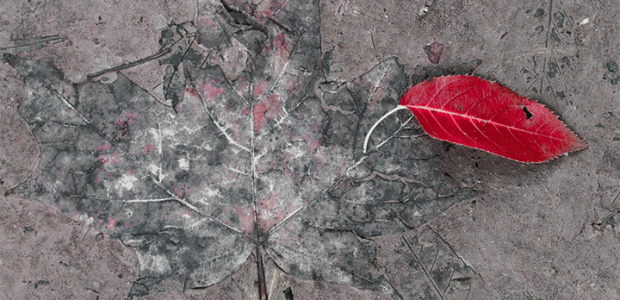By Mahesh Venkitachalam
When I got started with photography, the initial obstacles I dealt with were all technical. My world was inundated with focal lengths, f-stop numbers, shutter speeds, depth of field and various other technicalities. But once the dust settled, and I was able to produce a reasonably sharp and correctly exposed photograph, the bigger question emerged: Which way do I point the camera? In other words, how do I compose a good photograph? I found that the universal advice for the novice photographer was to use the “rule of the thirds”, along with precautionary tales that revolve around horizon placement – don’t tiit the horizon, don’t put it in the middle, and so on. So I followed these rules for a while. Before long, I realized that blindly applying these rules every time resulted in a predictable, mundane portfolio of photographs. I knew there had to be more to photography than these rules, but I did not have a clear direction on how to proceed.
The first breakthrough for me was when I came upon John Shaw’s book “Focus on Nature”. This book encouraged me to look at a scene in terms of geometric forms, color and texture. At that time, my main interest was in natural landscapes, and the ideas in the book helped me shift from thinking in terms of placing the subject in the frame to seeing the composition as a whole. The two approaches are perhaps equivalent, but the shift in the thought process resulted in a fundamental improvement in my photographs. When my interests drifted from natural landscapes to people, the above ideas were still helpful, but the constantly changing frame of people and moving subjects called for a different approach to composition.
The second, more fundamental breakthrough I had in my understanding of composition was when I came across the concept of layering in the work of National Geographic photographer Sam Abell. One of his most famous photographers is “Cowboys Branding Cattle, Montana” [1] in which there are 4 different stories happening in the frame. Yet, despite the complexity of the scene, due to careful choice of perspective, depth of field and timing, these stories are all presented with clarity, and without breaking the overall unity of the composition. This photograph appears in the list of 50 greatest photographs in the National Geographic web site [2], but there exists many such great examples of layered compositions in the work of Sam Abell.
When it comes to the human subject, creating a complex, layered image is all the more difficult because of the ever changing scene. I think a starting approach to creating such photographs is to look for a second story in the frame in addition to the main subject. Here are a few such attempts from my work.
The photograph below was captured at a kite fair in Bangalore. (Fuji X100)

When photographing people, the unexpected always happens. In the photograph below, I was trying to make a portrait of a friend in her new car, when the boy walked into the frame, eating an ice cream. I think this second story is what makes it interesting. (Leica M9 + 50 Summilux)

I took the photo below at a local eatery in Bangalore. There are multiple stories happening within the frame. (Fuji X100)

There are many such variations of layered images. One popular idea is to find an interesting static background and wait for a story to develop. I feel that this approach is most effective when you have a clear idea about the story you are trying to tell, rather than if you are just hoping for a cosmic coincidence that will bring your subjects to perfect alignment. With constantly moving subjects, presenting multiple stories in a frame without breaking the overall image seems all but impossible. One photographer who takes this idea successfully to the zenith of complexity is Alex Webb [3] of Magnum.
Layering is just one approach to composition, and like the application of any idea, it is likely to lose vitality with overuse. I am also not suggesting that aesthetics in photographic composition can be reduced to such rules, or that photography should always be approached in such an analytical manner. In fact, my personal approach has been more and more to leave the theory at home and engage with the subject and the moment, hoping that the insights gained by reading and thinking will express themselves in the background.
In conclusion, if you find yourself stuck in a compositional rut, exploring the idea of layering could have a rejuvenating effect on your work. But, just so we don’t take the theory too seriously, I leave you with these words of wisdom attributed to the master of our craft:
“Now to consult the rules of composition before making a picture is a little like consulting the law of gravitation before going for a walk.
Such rules and laws are deduced from the accomplished fact; they are the products of reflection.”
– Edward Weston
Mahesh Venkitachalam
July 2012, Bangalore
Mahesh Venkitachalam in an amateur photographer who lives in Bangalore, India. His portfolio can be see here: http://www.flickr.com/photos/tat-tvam-asi. He can be reached at info@tat-tvam-asi.in.
References
[1] The Photographic Life by Leah Bendavid-Val and Sam Abell (ISBN 0847824969)
[2] National Geographic 50 greatest photographs: http://ngm.nationalgeographic.com/ngm/50-best/
[3] The Suffering of Light by Geoff Dyer and Alex Webb (ISBN 1597111732)
You May Also Enjoy...
Cusco Peru Navel of the World
Click on image for more information In Quechuan, the language of the native people of the Andes, Cusco means, "navel of the world". For most
Happy Holidays From The Lula Team
FacebookTweet May this time be filled with light, wonder, art, experience, and expression. May your vision excel and your way be gentle. Take it easy!

